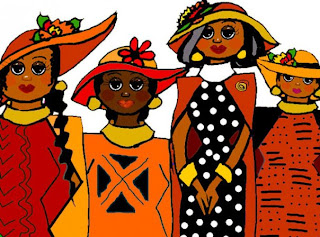
Born and raised in Cincinnati, OH, I studied art at Wayne State University and the University of Cincinnati prior to moving to Los Angeles in 1978. Not having worked in the arts during the majority of my adulthood, opting instead to be a wife, mother and subsequently a single-parent, I devoted my life to the rearing of my daughter. It wasn’t until I experienced the “empty nest” syndrome and the mass lay-off from a job I thought would carry me into retirement that I revisited the art within me with the passion that drives me today.
Upon receipt of the lay-off notice in 1997 and the accompanying severance check, I almost immediately went to the art supply store, purchased an easel, enough canvases to last for a while, pints of paint, and painted for seven days straight — 10-12 hours a day. Upon completion of this cathartic experience, I emerged from the paint and the canvas, not quite realizing what had just transpired, to witness a rebirth – the beginning of a new phase in my life. For the first time in my life, I felt as though I had identified my purpose — to glorify God in me by capturing the miracle of color on canvas and sharing it with all who will see.
Color, line, texture and form embrace the very essence of our existence. One needs only to see a rainbow . . . enjoy a flower . . . squeeze a big red ripe tomato . . . become dazzled by the beauty of a tropical fish . . . catch a glimpse of an exquisitely colored bird . . . watch a beautiful butterfly . . . or pet a lady bug to experience the miracle of color in our lives.
Through the use of color, line, texture and form I hope to capture in some small way the essence of our existence and thereby give homage to the universal power of God that makes it possible for the very same colors we see in a rainbow to again reveal themselves in our environment and all the things therein. Once this is done, it is my desire to put art into the hands of those who understand and appreciate the overwhelming power of color in their daily lives by capturing the beauty of color, line and form to be displayed in places where we can experience the power of its radiance, energy, and interaction.
Beverly A. Collins
(213) 925-5797
www.beverlycollins.com
Like this:
Like Loading...















